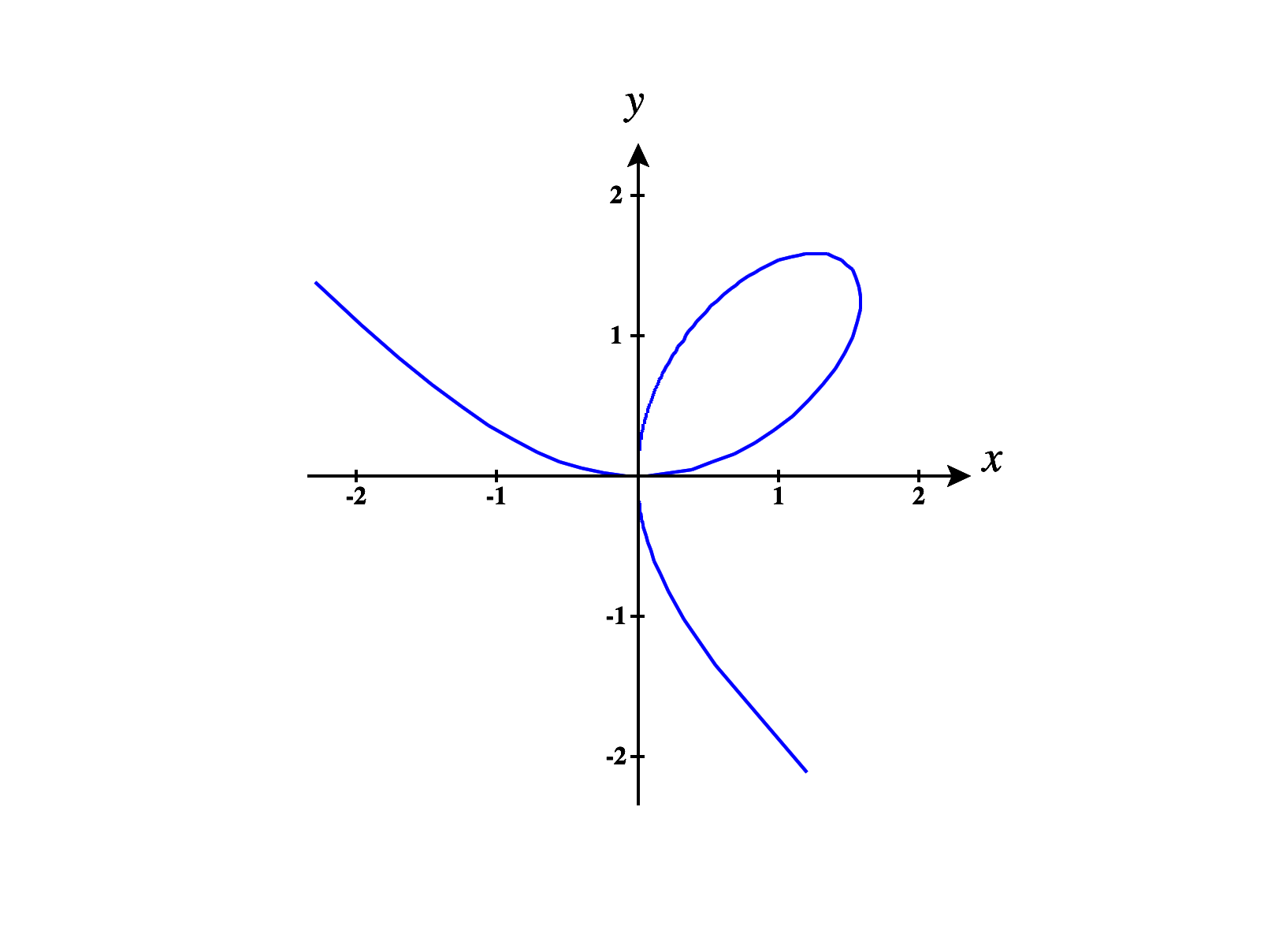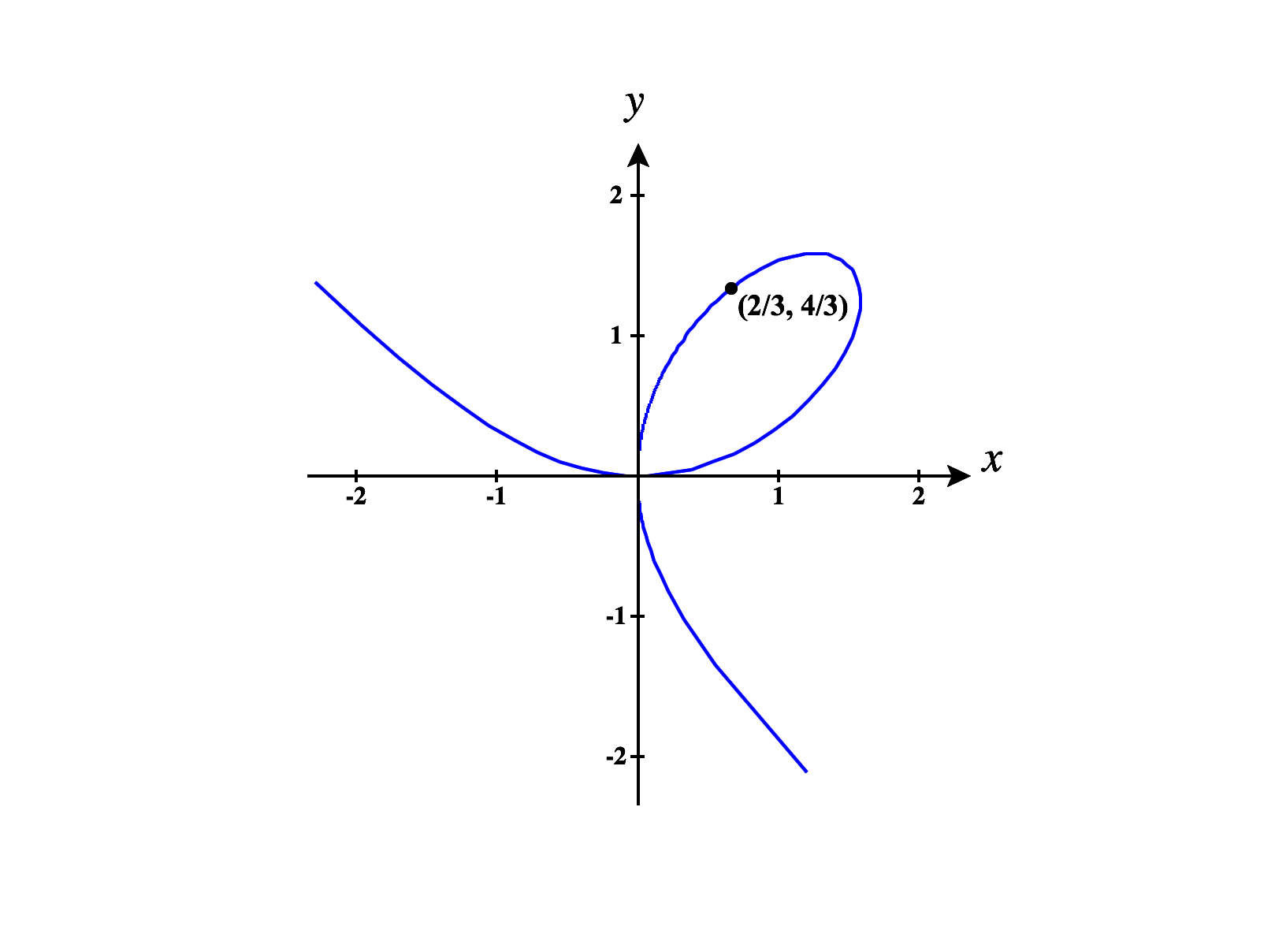By studying directional derivatives and their relationship to the gradient, we observed that the gradient of a function is always perpendicular to its level curves. That is, we proved the following theorem.
Now, suppose we have a curve defined implicitly. For example, the Folium of Descartes is the curve defined by the equation

Suppose we wanted to find an equation for the tangent line to this curve at the point . Using our knowledge from single variable calculus, there are a couple ways we could approach this problem. We could try to solve for in terms of , and use the standard single variable methods to find an equation for the tangent line. We could also use implicit differentiation, and find an equation for the tangent line that way.
We will now introduce a new method for finding an equation for the tangent line to this curve, that will use our above observations about the gradient of a function and level sets.
Tangent lines

If we define a function , then the curve is a level set of . In particular, it’s the level set . Then the gradient of will always be perpendicular to . This means that the tangent line to at the point will be perpendicular to . In order to take advantage of this fact, we’ll compute the gradient of . At the point , Suppose we have a point on the tangent line. Since is also on the tangent line, the vector between these points, , will be contained in the tangent line. That is, it will be parallel to the tangent line.
Thus, must be perpendicular to . That is, we must have which we can rewrite as Expanding the dot product, we obtain the equation, which is an equation for the tangent line to at the point .
Tangent planes
We can use a similar method to find equation for tangent planes to surfaces.
Notice that we can think of as a level set of the function In particular, is the level set .
Knowing that the tangent plane will be perpendicular to the gradient of , we compute At the point ,
So, the tangent plane will be the plane perpendicular to , which passes through the point . This plane is defined by the equation Which can be expanded to